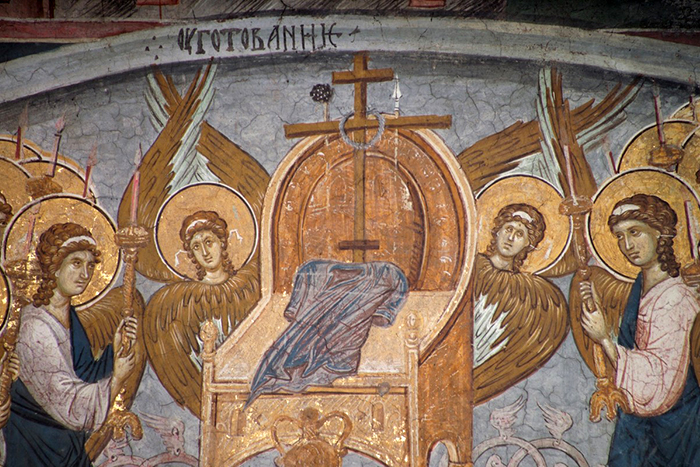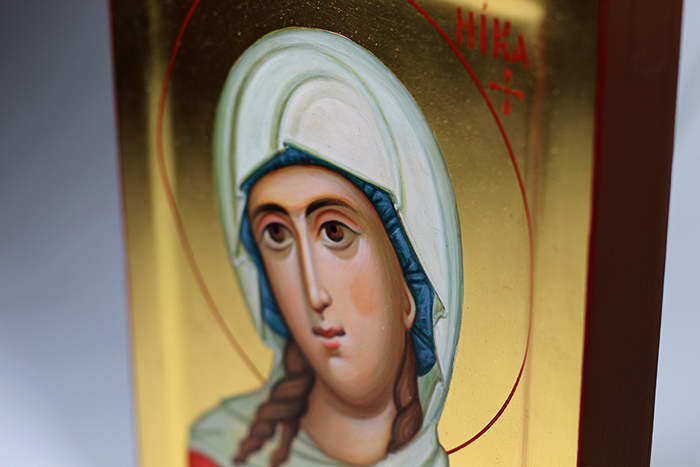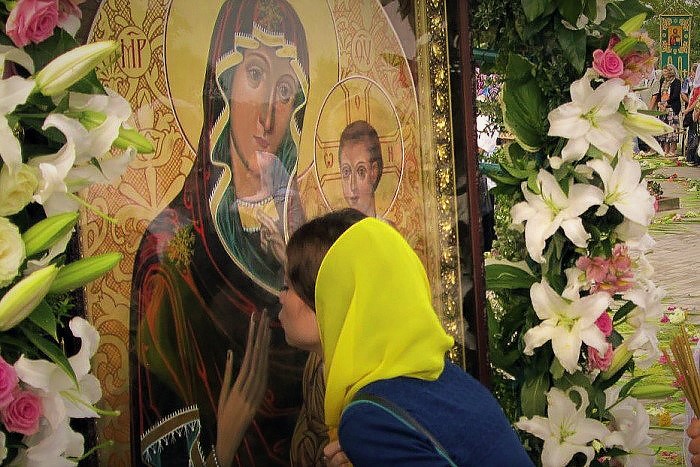
We venerate Thy most pure image, O Good One
The Church celebrates the feast day of one of the most famous and revered icons of the Lord – the image of the Savior Not Made by Hand. Why is this icon so famous and why is it called a non-handmade icon? Where is it now? Let’s have a look into it.
King Abgar’s Request. The Gospel of John mentions a group of Greeks who wanted to see Jesus (cf. John 12: 21). According to one version, those Greeks were ambassadors of King Abgar V from the ancient Hellenistic city of Edessa (now Urfa in southern Turkey). The legend has it that the king had been struck by leprosy all over his body. He heard of the miracles that Jesus was doing and the glory of which spread throughout Syria. The king came to believe in Christ and wrote a letter to the Lord asking Him to cure him of the disease. The Lord washed his face and wiped it with a towel, and miraculously left his image on the cloth which he then gave to the king. The latter was healed. Edessa was the first city to officially accept Christ as its Lord, and the miraculous image was placed above the gates of the city, so that everyone could worship the Most Pure image of the Savior. This story is reported by the Armenian historian Movses Khorenatsi (5th century) and the first historian of the Church, Eusebius of Caesarea (4th century), as well as other famous ancient historians Procopius and Evagrius.
Rescue from the Persians. The icon of the Savior was hidden in a brick wall by one of the bishops, who was afraid of the desecration of the sacred object by one of the great-grandsons of King Abgar, who had turned to paganism. Over time, the memory of the image which was not made by hand was lost, but the Holy Face was found again during the invasion of the Persian troops of King Khosrow I. Persians besieged the city and it faced imminent destruction, when Bishop Eulavius saw the main holy object of the city in a vision. After the discovery of the Holy Face and a religious procession with the Icon around the walls of the city, the Persian army suddenly lifted its siege and left Edessa. The city was saved. The Arabs seized the city in 630. However, the descendants of Ishmael, unlike the Zoroastrian Persians, respected Jesus, albeit in their own way, and did not prevent the veneration of the Face of the glorified Son of Mary.
Triumph over Iconoclasm. The Christendom always knew about the Holy Face of Edessa, especially the Orthodox East, but it was during the Iconoclasm crisis that the image gained extreme importance. Some Byzantine emperors, especially Leo III the Isaurian, destroyed the holy icons in the 8th century under the pretext of “purification” of the Christian religion. Orthodox defenders of the sacred images (St. John of Damascus, St. Herman of Constantinople, St. Theodore the Studite, Pope Gregory II, Adrian I, and others) used the Holy Face from Edessa, which was traditionally associated with Jesus Himself, as the main historical argument in support of icon veneration. The Holy Face is mentioned even in the acts of the Second Nicene (VII Ecumenical) Council of 787, which determined the orthodoxy and orthopraxis (correct action) of the veneration of sacred images on the grounds of the existence of the Holy Face from Edessa, as well as on the dogmatic basis of the truth of God’s incarnation, in its creed. Not only can we hear God in His Word; He also became visible through Christ, who is both truly human and truly divine. Thus, He can be depicted.
Relocation to Constantinople. The Roman armies of the Byzantine emperor Romanos I Lekapenos (920-944) besieged the city of Edessa during the wars with the Arabs. Its inhabitants handed over the Holy Image of the Savior to the emperor as a condition of lifting the siege and making peace. The image was transferred to Constantinople, one of the major Orthodox cities, with a gleeful celebration of the people. This translation was so important and momentous that a special church holiday was established in its honor. It is observed by the whole Orthodox Church on August 29 immediately after the Dormition of the Mother of God.
Subsequent fate of the Image. The Byzantine Empire experienced a long period of crisis and decline. Constantinople was captured and brutally plundered by crusaders in 1204. The Image of Christ Not-Made-By-Hands was taken out and allegedly drowned in the Sea of Marmara during a shipwreck. According to a different version, the Holy Face was taken out of Constantinople only in 1362 by Leonardo Montaldo, a Genoese captain and a future Doge of Genoa. He either received it as a gift, or, more likely, requested it as a payment for the military assistance he had provided to Emperor John V Paleologue. Having brought the holy object to Genoa, Montaldo presented it to the Armenian Church of St. Bartholomew in 1384. France captured Genoa in 1507 and took the Holy Icon away, but thanks to the intervention of Genoese ambassadors, merchants, and bankers, the Icon was later returned to Genoa. Who knows what would have happened to this great holy image if it had remained in the occupied Byzantine lands? The Holy Face plays a significant role in the spiritual support of the city of Genoa. It preserves the evidence of the truth of the basic tenet of the Orthodox faith, i. e. the Incarnation of the Savior.



